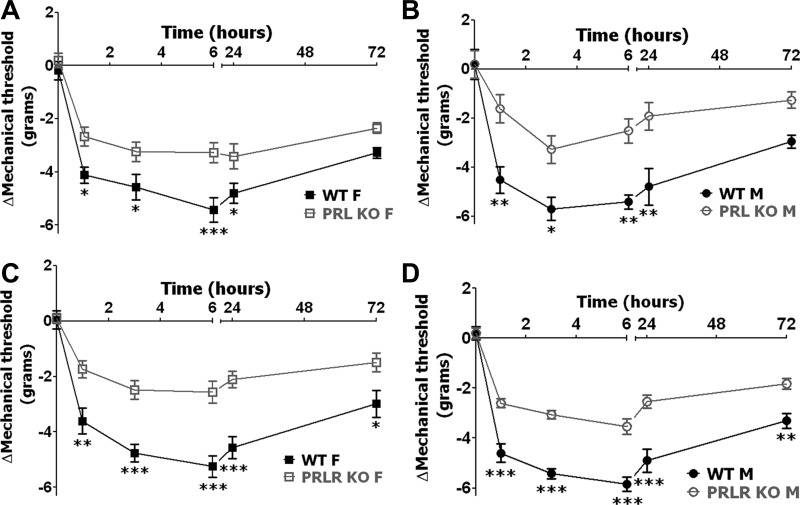Fig. 6.
CFA-induced mechanical allodynia in PRL KO and PRL-R KO female and male mice. A: CFA-induced mechanical allodynia in WT and PRL KO female mice. Mechanical allodynia reflects changes from baseline mechanical threshold responses measured before CFA application (ΔMechanical threshold; *P < 0.05 and ***P < 0.001; 2-way ANOVA; n = 11). B: CFA-induced mechanical allodynia in WT and PRL KO male mice (ΔMechanical threshold; *P < 0.05 and **P < 0.01; 2-way ANOVA; n = 8). C: CFA-induced mechanical allodynia in WT and PRL-R KO female mice (ΔMechanical threshold; *P < 0.05, **P < 0.01, and ***P < 0.001; 2-way ANOVA; n = 11). D: CFA-induced mechanical allodynia in WT and PRL-R KO male mice (ΔMechanical threshold; **P < 0.01 and ***P < 0.001; 2-way ANOVA; n = 9). Post-CFA time points are indicated above x-axis. Mouse lines and sex are noted.

